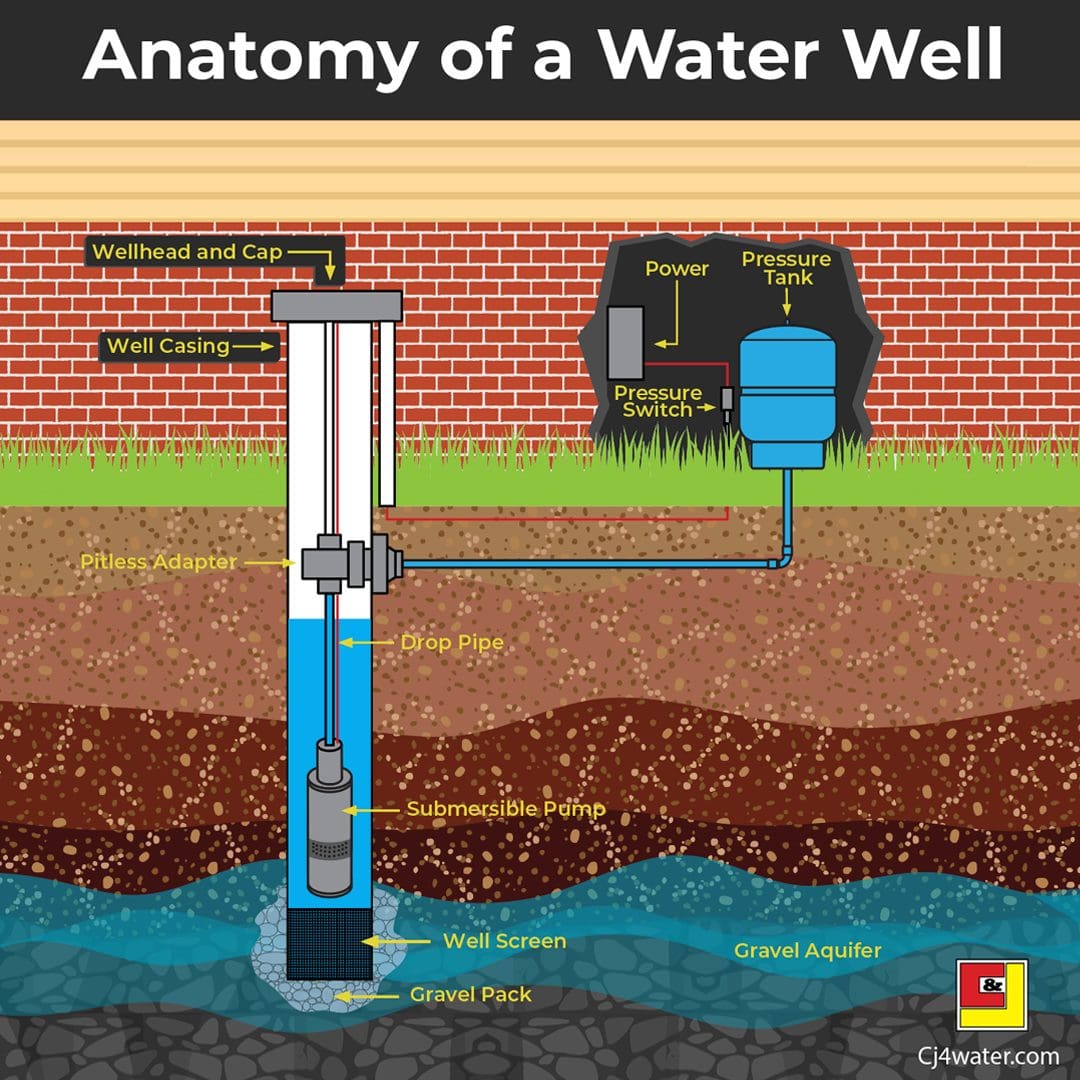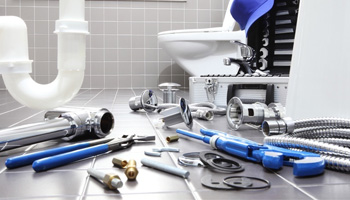The Layout of Your Home's Plumbing System Explained
The Layout of Your Home's Plumbing System Explained
Blog Article
What're your insights and beliefs on Anatomy of a House: Understanding the Components?

Comprehending just how your home's pipes system works is important for every single house owner. From providing clean water for alcohol consumption, food preparation, and bathing to safely removing wastewater, a properly maintained pipes system is important for your family's health and wellness and comfort. In this comprehensive overview, we'll explore the detailed network that comprises your home's plumbing and deal suggestions on upkeep, upgrades, and dealing with usual problems.
Intro
Your home's pipes system is more than simply a network of pipes; it's an intricate system that ensures you have accessibility to clean water and reliable wastewater removal. Knowing its elements and just how they collaborate can help you stop expensive fixings and make sure everything runs efficiently.
Basic Parts of a Plumbing System
Pipelines and Tubing
At the heart of your pipes system are the pipes and tubes that carry water throughout your home. These can be constructed from various materials such as copper, PVC, or PEX, each with its benefits in terms of longevity and cost-effectiveness.
Fixtures: Sinks, Toilets, Showers, and so on.
Components like sinks, bathrooms, showers, and bath tubs are where water is utilized in your house. Understanding exactly how these components connect to the plumbing system aids in diagnosing troubles and planning upgrades.
Valves and Shut-off Factors
Shutoffs control the circulation of water in your plumbing system. Shut-off valves are critical during emergency situations or when you require to make repair work, enabling you to separate parts of the system without interfering with water circulation to the entire residence.
Supply Of Water System
Key Water Line
The major water line connects your home to the community supply of water or an exclusive well. It's where water enters your home and is distributed to different components.
Water Meter and Stress Regulator
The water meter steps your water use, while a stress regulatory authority ensures that water flows at a risk-free stress throughout your home's plumbing system, avoiding damage to pipes and fixtures.
Cold Water vs. Warm water Lines
Recognizing the distinction between cold water lines, which supply water straight from the major, and warm water lines, which carry warmed water from the water heater, aids in troubleshooting and planning for upgrades.
Drain System
Drain Pipes Piping and Traps
Drain pipes carry wastewater away from sinks, showers, and toilets to the drain or sewage-disposal tank. Catches protect against sewage system gases from entering your home and also trap debris that might create obstructions.
Air flow Pipelines
Ventilation pipes allow air right into the water drainage system, preventing suction that can reduce water drainage and create catches to vacant. Proper ventilation is essential for maintaining the honesty of your pipes system.
Relevance of Correct Water Drainage
Ensuring proper drain stops back-ups and water damages. On a regular basis cleansing drains pipes and preserving traps can avoid expensive repair work and extend the life of your pipes system.
Water Heater
Kinds Of Water Heaters
Water heaters can be tankless or standard tank-style. Tankless heating units warm water on demand, while tanks save warmed water for prompt usage.
Upgrading Your Plumbing System
Reasons for Updating
Updating to water-efficient fixtures or changing old pipelines can boost water top quality, minimize water expenses, and increase the value of your home.
Modern Pipes Technologies and Their Advantages
Check out technologies like clever leakage detectors, water-saving bathrooms, and energy-efficient water heaters that can save cash and minimize environmental influence.
Price Factors To Consider and ROI
Calculate the upfront prices versus long-lasting savings when taking into consideration plumbing upgrades. Many upgrades spend for themselves with decreased energy expenses and fewer fixings.
How Water Heaters Attach to the Plumbing System
Recognizing exactly how water heaters attach to both the cold water supply and warm water distribution lines aids in identifying issues like not enough hot water or leakages.
Maintenance Tips for Water Heaters
Regularly purging your water heater to get rid of sediment, inspecting the temperature level settings, and inspecting for leakages can extend its life-span and enhance power effectiveness.
Usual Plumbing Issues
Leakages and Their Causes
Leakages can occur because of aging pipelines, loose installations, or high water pressure. Resolving leaks without delay avoids water damages and mold development.
Clogs and Obstructions
Clogs in drains pipes and commodes are typically brought on by flushing non-flushable things or an accumulation of oil and hair. Utilizing drain displays and bearing in mind what decreases your drains pipes can prevent blockages.
Signs of Plumbing Troubles to Watch For
Low water pressure, slow-moving drains, foul odors, or abnormally high water expenses are signs of prospective plumbing issues that need to be addressed immediately.
Pipes Maintenance Tips
Routine Examinations and Checks
Schedule annual pipes inspections to catch problems early. Try to find indicators of leaks, rust, or mineral accumulation in faucets and showerheads.
DIY Maintenance Tasks
Basic jobs like cleaning faucet aerators, checking for commode leakages making use of color tablets, or insulating subjected pipelines in cool climates can protect against significant pipes issues.
When to Call a Professional Plumbing Technician
Know when a pipes issue requires professional proficiency. Attempting complex repairs without proper knowledge can bring about more damages and greater fixing prices.
Tips for Reducing Water Usage
Straightforward habits like fixing leakages without delay, taking much shorter showers, and running complete lots of washing and recipes can conserve water and lower your energy costs.
Eco-Friendly Pipes Options
Take into consideration sustainable plumbing materials like bamboo for floor covering, which is durable and environment-friendly, or recycled glass for kitchen counters.
Emergency Preparedness
Steps to Take During a Plumbing Emergency
Know where your shut-off valves lie and just how to switch off the water in case of a ruptured pipeline or significant leak.
Value of Having Emergency Contacts Convenient
Maintain call info for regional plumbings or emergency services conveniently offered for fast action during a plumbing dilemma.
Environmental Impact and Conservation
Water-Saving Fixtures and Devices
Mounting low-flow taps, showerheads, and toilets can significantly minimize water use without sacrificing performance.
Do It Yourself Emergency Situation Fixes (When Appropriate).
Temporary solutions like utilizing duct tape to spot a leaking pipe or positioning a bucket under a trickling tap can reduce damage up until a professional plumbing professional shows up.
Conclusion.
Comprehending the anatomy of your home's pipes system equips you to maintain it successfully, conserving money and time on repair work. By complying with regular maintenance regimens and staying informed regarding modern pipes innovations, you can ensure your pipes system operates efficiently for several years to come.
Exploring Your Homes Plumbing Anatomy
Water Supply System
Main Water Line: This is where water enters your home from the municipal supply or a private well. Water Meter: Typically located near where the main water line enters the property, it measures the amount of water used. Shutoff Valve: It s crucial to know where this is in case of emergencies. It allows you to turn off the water supply to the entire house. Pipes and Fittings: These distribute water throughout your home. Materials can include copper, PVC, or PEX. Drain-Waste-Vent (DWV) System
Drains: Located in sinks, showers, and tubs, these carry wastewater away. Traps: U-shaped pipes under sinks that hold standing water, blocking sewer gases from entering the home. Vents: Pipes that lead from the DWV system to the outside, preventing vacuum formation and allowing gases to escape. Sewer Line: Carries all wastewater from the home to the municipal sewer system or a septic tank. Fixtures and Appliances
Sinks, Toilets, and Showers Dishwashers and Washing Machines Water Heaters Maintenance Tips
Regularly check for leaks in exposed pipes and around fixtures. Inspect the water heater annually for signs of wear. Clean drains and traps to prevent clogs and odors. Know how to shut off water to individual fixtures. When to Call a Professional
Major leaks or burst pipes Installation of new pipes or fixtures Septic tank issues Remodeling projects that involve plumbing changes Conclusion
Understanding the anatomy of your home's plumbing is key to maintaining a functional and efficient system. Regular checks and knowing when to call in the experts can save you time, money, and stress.
https://www.mavyn.com/blog/exploring-your-homes-plumbing-anatomy

I recently found that review on while surfing the internet. Loved our blog? Please share it. Let another person locate it. I truly appreciate your readership.
Additional Resources Report this page